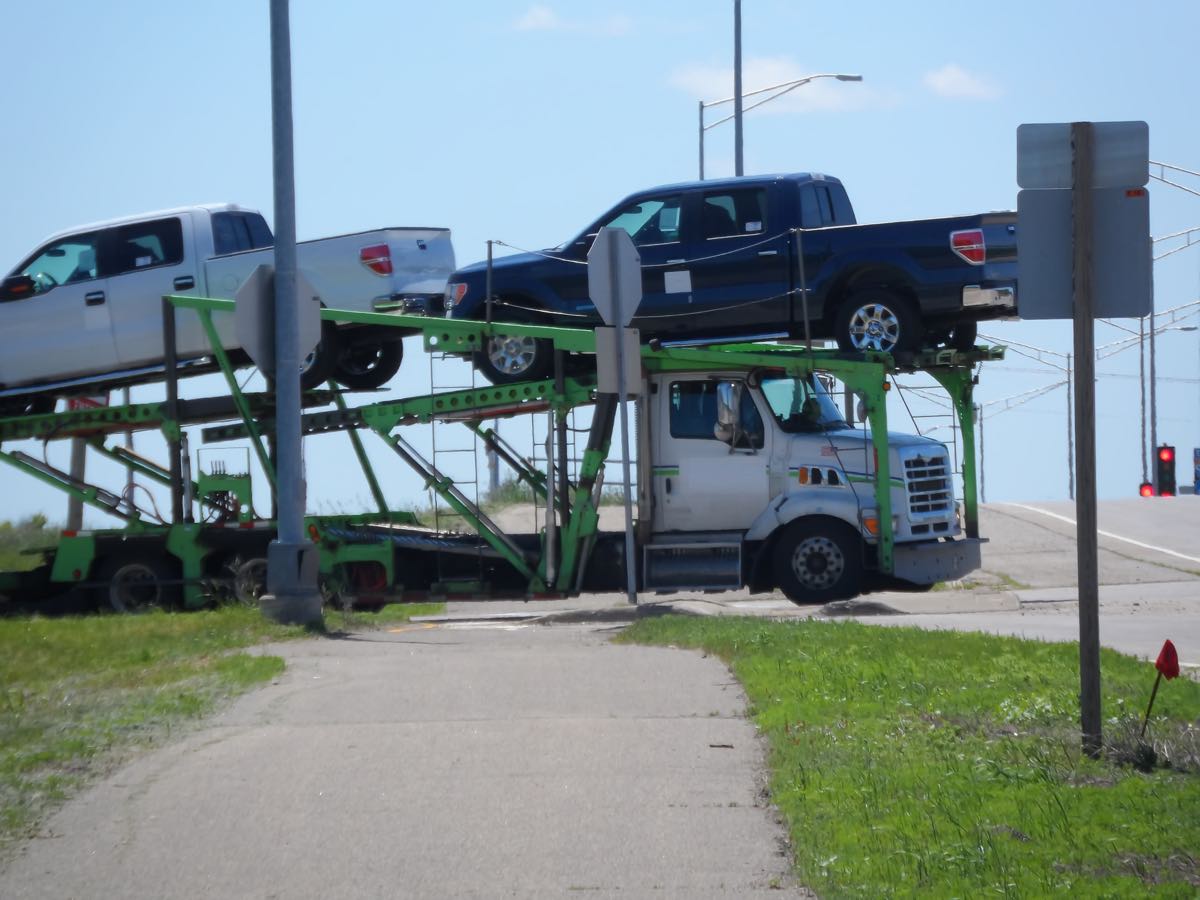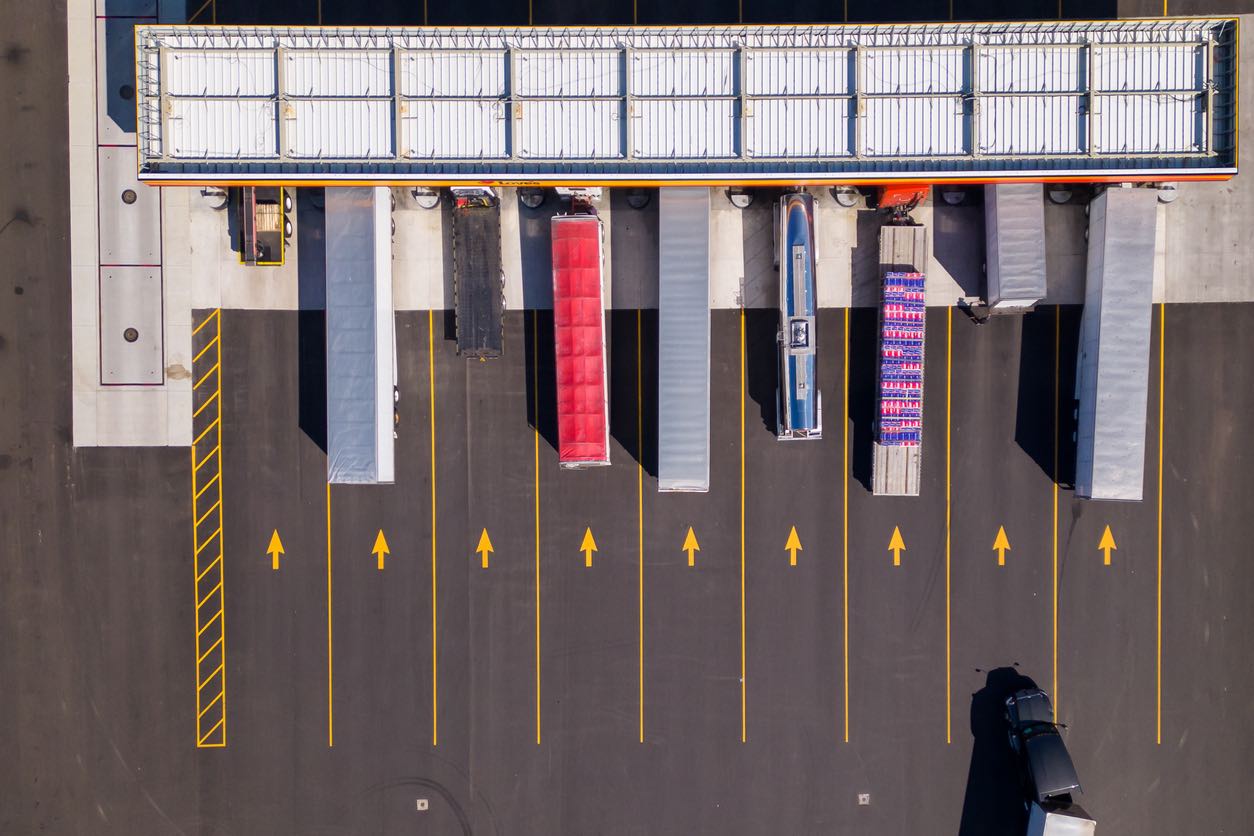The trucking industry serves as the backbone of the American economy, ensuring the flow of goods across the nation. Recently, however, the industry faces a series of challenges, from fluctuating freight markets to changing trailer orders. This blog post delves into the latest economic trucking trends, focusing on the United States, to understand the implications for carriers, manufacturers, and the broader logistics sector. We’ll explore truck tonnage dynamics, trailer order trends, spot market rates, and industry forecasts, aiming to provide a comprehensive overview of the current state and future outlook of the U.S. trucking industry. As the world grapples with economic uncertainties, the role of the trucking industry in maintaining supply chains becomes even more critical. Disruptions in this sector can have wide-reaching effects, not just on the logistics and transportation sectors, but also on the overall economy, affecting everything from retail to manufacturing. Thus, keeping a pulse on the health and trends of the trucking industry is essential for business leaders, policymakers, and the general public alike.
Amidst this backdrop, several key factors are shaping the landscape of the U.S. trucking industry. Technological advancements, regulatory changes, and evolving consumer demands are all playing a part in transforming how goods are transported across the country. At the same time, environmental considerations are pushing the industry towards more sustainable practices. This complex interplay of factors makes it an interesting yet challenging time for the trucking sector. Through this blog post, we will dissect these trends, understand their implications, and peek into what the future holds for trucking in America. By providing an in-depth analysis of the current situation and a look ahead, we aim to equip our readers with the knowledge they need to navigate these changing tides.

The “Truck Tonnage Reality Check” section dives into the recent downturn in the U.S. trucking industry’s tonnage metrics, offering insights into the implications of these trends. It provides a detailed examination of the factors contributing to the decline in tonnage, both in January and over the past year, highlighting the broader challenges faced by the industry.
Tonnage Trends in January: January’s tonnage data painted a bleak picture for the U.S. for-hire trucking sector, with a notable decrease that served as a wake-up call for many within the industry. The significant downturn was not an isolated event but the result of a constellation of factors, including challenging winter weather conditions that disrupted transport routes and operations. Moreover, key economic sectors that typically generate substantial freight volumes—such as retail, construction, and manufacturing—experienced downturns, directly impacting the demand for trucking services. This decline in January is a clear indicator that the path to recovery may be longer and more arduous than previously anticipated, necessitating strategic adjustments by carriers and stakeholders to navigate these turbulent times.
Year-Over-Year Comparison: A comparative analysis of the current data with that of the previous year reveals a distressing continuation of declining tonnage, marking the eleventh consecutive year-over-year decrease. This persistent downward trend underscores the enduring challenges the trucking industry faces in achieving sustainable growth. The implications of this trend extend beyond immediate financial pressures, suggesting a need for a recalibrated approach to address the underlying issues of fluctuating demand and economic instability. Recognizing these challenges is the first step toward strategizing for resilience and adaptability in an industry at the mercy of complex economic forces.

The beginning of the year brought unwelcome news for the trucking industry, as trailer orders experienced a significant downturn. This section not only reflects on the immediate figures but also considers the broader implications of such a shift. It serves as a deep dive into the underlying causes of this decline and the potential long-term effects on the entire logistics and transportation sector. Here, we’ll dissect the initial shock to the industry and explore the evolving landscape of trailer production and backlog management.
Sharp Decline to Start the Year: January’s figures were a stark reminder of the volatile nature of the trucking industry, showcasing a dramatic fall in trailer orders that sent ripples throughout the market. This decrease is not just a number; it reflects broader uncertainties and a possibly shifting paradigm where the previous years’ pent-up demand begins to wane. The decline is analyzed in the context of its immediate impact on manufacturers and carriers, who must now navigate this new terrain. This significant downturn prompts a reassessment of inventory and demand forecasts, with companies needing to adapt quickly to avoid the pitfalls of overcapacity and underutilization. It’s a clear signal that the industry may need to brace for a period of recalibration, as stakeholders reevaluate their strategies in light of changing market conditions.
Production and Backlog Dynamics: The domino effect of falling trailer orders quickly extended to production levels, which also saw a notable reduction. This adjustment in production rates is more than a mere response to decreased orders; it represents a strategic move by manufacturers to align their operations with the current market reality. The discussion here extends to the backlog of orders, which, while also affected, presents an opportunity for the industry to achieve a more sustainable balance between supply and demand. By closely examining these dynamics, this section highlights the efforts made by the industry to steer towards a level of stability and efficiency reminiscent of the pre-pandemic era. The recalibration efforts are crucial for maintaining the industry’s long-term health, ensuring that companies can manage their resources effectively while preparing for future demand surges.
This segment of the blog post sheds light on the critical challenges faced by the trucking industry at the outset of the year, emphasizing the need for resilience and adaptability in the face of fluctuating market dynamics. The decline in trailer orders and the subsequent impact on production and backlog dynamics serve as a wake-up call, urging industry players to reassess their strategies and operational frameworks to thrive in an ever-changing environment.

The dynamics of spot market rates and capacity challenges present a nuanced picture of the current U.S. trucking landscape. This section delves into how different segments within the industry are performing and the broader implications of these trends on future market conditions. With a focus on the contrasting performances across various freight types and the evolving capacity landscape, we explore the forces shaping the industry’s immediate future.
Segment-Specific Performances: The flatdeck segment’s robust performance stands out as a beacon of resilience in an otherwise fluctuating spot market. Despite facing downward pressure, overall spot market rates have been buoyed by this strength, highlighting a disparity in demand and pricing power among different freight types. This trend prompts a deeper investigation into the factors contributing to the flatdeck segment’s robustness, including industry-specific drivers and broader economic influences. For carriers, understanding these nuances is critical, as it influences strategic decisions around fleet composition and market focus.
Capacity and Rate Expectations: The landscape of trucking capacity and rate expectations is currently undergoing significant transformations, influenced by a myriad of factors including diesel prices and overall freight demand. Rising fuel costs have a direct impact on operational expenses for carriers, potentially accelerating the exit of smaller operators from the market and thereby tightening overall capacity. Conversely, fluctuations in freight demand can either alleviate or exacerbate these pressures. Industry experts shed light on the delicate balance between these elements and their cumulative effect on market conditions. Their insights suggest a period of adjustment ahead, with the potential for rate stabilization contingent on a complex interplay of market forces.
In summary, the spot market rates and capacity challenges section illuminates the intricacies of the current trucking environment through the lens of segment-specific performances and the broader economic and operational factors at play. By dissecting these trends, carriers and stakeholders gain valuable insights into navigating the complexities of the market, equipping them with the knowledge to make informed strategic decisions. This analysis not only underscores the immediate challenges but also sets the stage for understanding potential future shifts in the trucking industry’s landscape.

As the U.S. trucking industry navigates through a period marked by economic volatility and operational challenges, understanding the forecasts and strategic responses becomes crucial. This section dives into the economic indicators shaping the future of the industry and examines how businesses are adapting their strategies in response. Through expert analysis and industry insights, we explore the potential pathways to recovery and resilience in the trucking sector.
Economic Indicators and Projections: Economic indicators serve as the pulse of the industry, guiding forecasts and strategic planning. Recent analyses by industry experts anticipate the market conditions to remain below-neutral, reflecting a cautious approach towards recovery expectations. This outlook is shaped by factors such as fuel prices, freight demand, and broader economic trends, including consumer spending and manufacturing outputs. In response, large carriers are reevaluating their operational strategies, focusing on cost management and efficiency improvements. These adaptations are crucial as they prepare for a potential uplift in market conditions, expected in the latter half of the year. The proactive measures taken by these carriers aim to position them advantageously for when the market begins its recovery phase, highlighting the importance of agility in today’s ever-changing economic landscape.
Market Adaptation and Outlook: The trucking industry’s ability to adapt to market fluctuations is a testament to its resilience. Faced with ongoing challenges, companies are implementing a variety of strategies to ensure their sustainability and growth. Adjustments in capacity, through fleet size modifications, and strategic equipment purchases, are being made to align with current and anticipated demand levels. Operational efficiency has also become a focal point, with investments in technology and process optimization to reduce costs and enhance service quality. Despite the hurdles, the industry outlook remains cautiously optimistic. Signs of improvement are on the horizon, fueled by the adaptability of carriers and their commitment to navigating the complexities of the current market. This optimism is grounded in the belief that strategic adjustments made today will pave the way for stronger performance in the future, reinforcing the sector’s pivotal role in the global supply chain.
These sections underscore the dynamic nature of the trucking industry and its capacity to respond to economic pressures with innovative and forward-thinking strategies. As the industry continues to evolve, these efforts to adapt and anticipate future trends will be crucial in driving its success and sustainability.
![]()
As the U.S. trucking industry maneuvers through a labyrinth of economic upheavals, burgeoning capacity dilemmas, and unpredictable market climates, its journey mirrors a relentless quest against odds. The landscape, marked by a concoction of recent downturns and potential adversities, equally heralds a phase ripe for recalibration and robust growth. The industry’s inherent resilience, coupled with proactive strategizing from carriers and manufacturers, lights up the pathway to equilibrium and expansion. Moving ahead, the trucking sector’s prowess in embracing change, fostering innovation, and navigating through the flux will be pivotal in transcending the current vicissitudes and capitalizing on the dawn of new possibilities.

A leader in automobile and freight transportation, Ship A Car, Inc. (SAC) stands apart in the fiercely competitive and ever-changing U.S. trucking market. SAC is distinguished not only by its persistent drive to deliver dependable and effective transportation solutions throughout the United States, but also by its deep attention to attaining client satisfaction. The services offered by SAC are meticulously planned in order to ensure timely and high-quality delivery while paying close attention to safety. SAC’s staff of experienced transport consultants, who are prepared to provide individualized assistance and help customers navigate the shipping procedure with ease, complements this commitment to quality. Customers may get in touch with SAC for a comprehensive consultation and a free, no-obligation estimate that demonstrates SAC’s open and customer-focused philosophy by contacting (866) 821-4555.
Q: Why has there been a significant drop in U.S. truck tonnage?
A: There are a number of factors that may be attributed to the decrease in truck tonnage. These factors include bad weather conditions, as well as declines in important economic sectors such as retail sales, home starts, and manufacturing production.
Q: What does the decline in trailer orders indicate about the industry?
A: The decrease in trailer orders is a reflection of the uncertainties that are prevalent throughout the transportation industry. It also indicates a shift toward stabilization following the pandemic, which might indicate the end of the period of pent-up demand.
Q: How is Ship A Car, Inc. adapting to the current market conditions?
A: Ship A Car, Inc. is able to adjust by putting an emphasis on customer service, developing and implementing effective logistics solutions, and preserving a solid network of carriers. This allows the company to maintain its reliability and flexibility in the face of changes in the market.




